Kimono, traditional Japanese garments, have been worn for centuries and have become an iconic symbol of Japan’s rich culture and history.
With a history dating back to the 8th century, kimono have undergone many changes over time. They have evolved from being the formal attire worn by the elite to the everyday wear of ordinary people.
This extensive overview will delve into the history and evolution of the kimono and the different styles and types that exist today.
From the traditional hand-made silk kimono to the more contemporary versions, we’ll explore the materials, patterns, and designs that make kimono so unique.
Whether you’re a fashion enthusiast, a history buff, or simply curious about this traditional garment, this article has something for everyone.
Without further ado, let’s dive in!
What are Kimono?
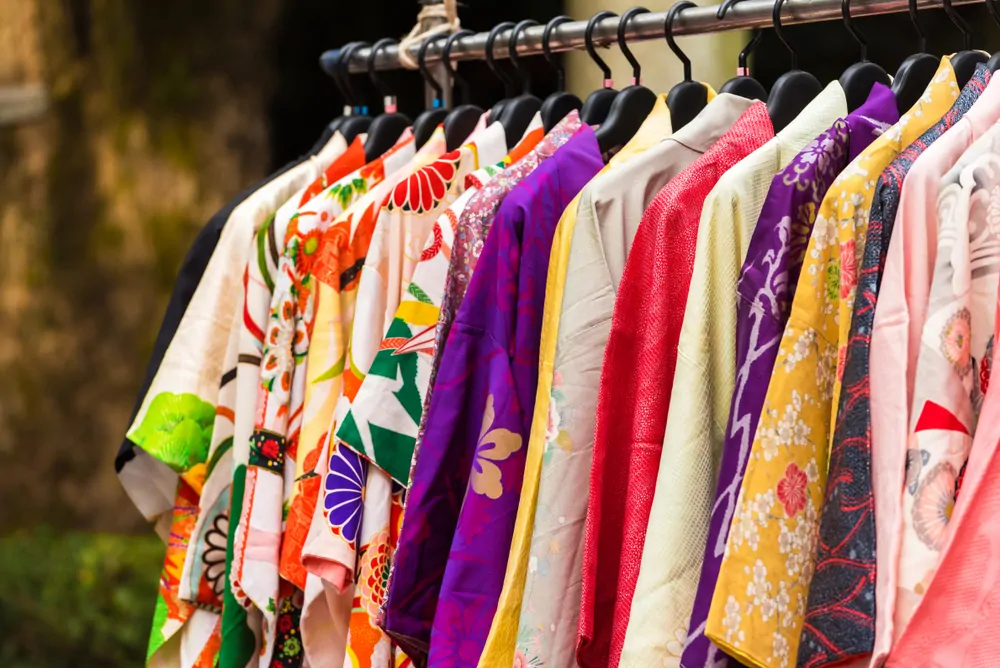
Kimono are Japanese garments typically made from a single bolt of fabric wrapped around the body, with the left side of the kimono overlapping the right side. They are secured with a sash called an obi, tied to the back.
These garments are typically long-sleeved, fall to the ankle, and wear traditional footwear called geta or zori. These are wooden sandals with a thong between the toes. The traditional, classic kimono is made of silk, and the patterns and designs are often hand-painted or hand-dyed.
There are different types of kimono for different occasions and seasons – the formal kimono worn by men and women for ceremonies and formal events is usually made of silk with intricate patterns and designs.
The everyday wear variant for men and women’s kimono is usually made of cotton or hemp and is simpler in design, and children’s kimono are also simpler in design and made of cotton or linen. There are also regional variations in kimono, which can be seen in the different patterns, colors, and designs used.
A Brief History
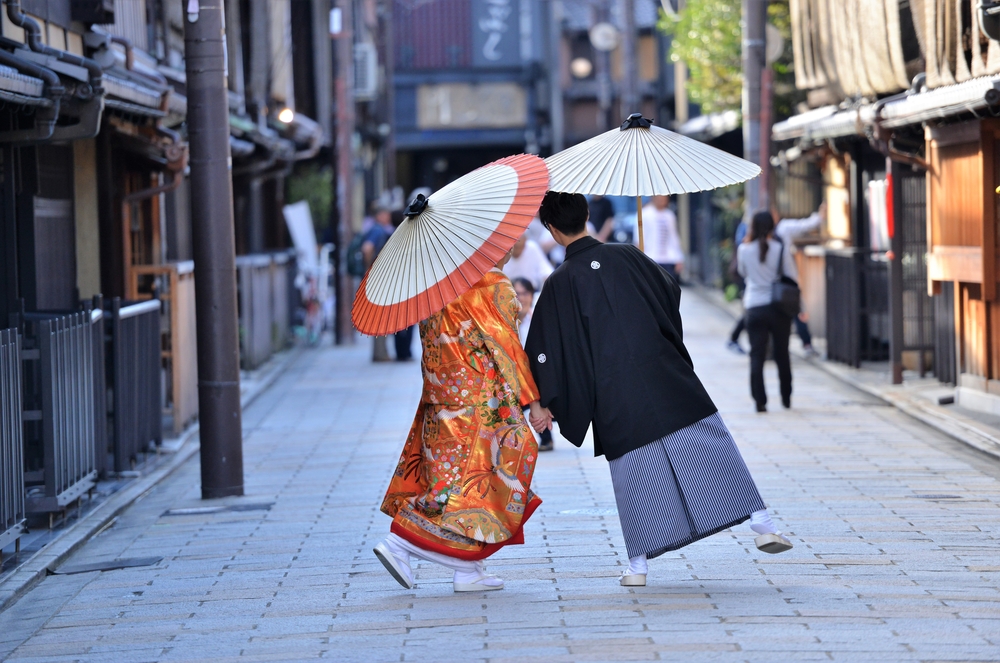
The history of the kimono can be traced back to the 8th century, during the Heian period in Japan – at that time; the elite class wore kimono.
They were made of expensive silk fabrics adorned with intricate patterns and designs.
Edo Period
During the Edo period (1603-1868), kimono became more widely worn by regular people and began to evolve into the form we recognize today.
The kimono of this period were made of cheaper materials, such as cotton and hemp, and was simpler in design. The kimono’s design and style became more varied and adapted to different seasons and occasions.
Meiji Period
In the Meiji period (1868-1912), Western clothing began to be introduced to Japan, and the kimono started to lose its status as the main form of clothing. Nonetheless, kimono remained essential to traditional Japanese culture and were still worn on special occasions.
Taisho & Showa Periods
During the Taisho period (1912-1926) and the Showa period (1926-1989), kimono continued to evolve and adapt to changing fashion trends.
The kimono became more colorful and was often made from synthetic fabric, while the traditional kimono was worn less frequently and was primarily used as formal and ceremonial attire.
21st century
Today, Japanese people wear kimono less frequently but are still an essential part of traditional Japanese culture and are worn at special events such as weddings, coming-of-age ceremonies, and festivals.
The kimono is also a popular choice for traditional Japanese performances such as Kabuki and is often worn by Geisha and Maiko (apprentices of Geisha).
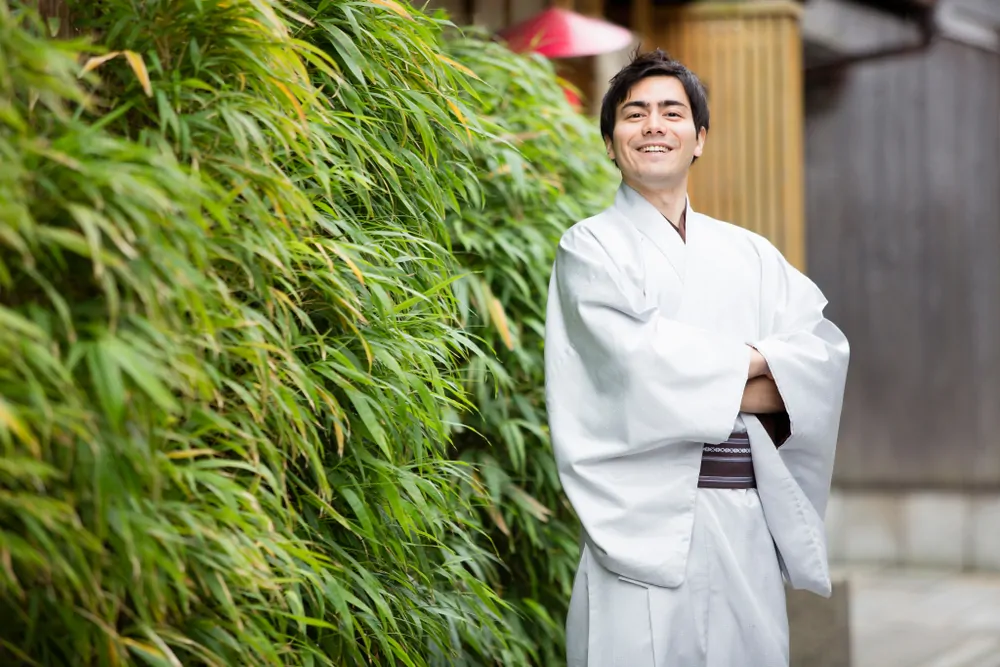
In recent years, there has been a renewed interest in kimono, both in Japan and worldwide, as a fashion item, with contemporary designers creating new designs and styles that pay homage to the traditional kimono. Its status as a high fashion item is backed up by the centuries of culture and exquisite artistry that went into making the garments.
This sudden comeback can also be attributed to the kimono’s appearance in popular culture. For example, in recent anime releases such as “Demon Slayer” or “Rurouni Kenshin,” the main characters have frequently sported these garments and have thus exposed them to younger audiences.
The Artistry Behind Kimono Making
The art of kimono making is a traditional craft passed down through generations of Japanese artisans. Many kimono seen today don’t require the meticulous attention to detail that was traditionally required.
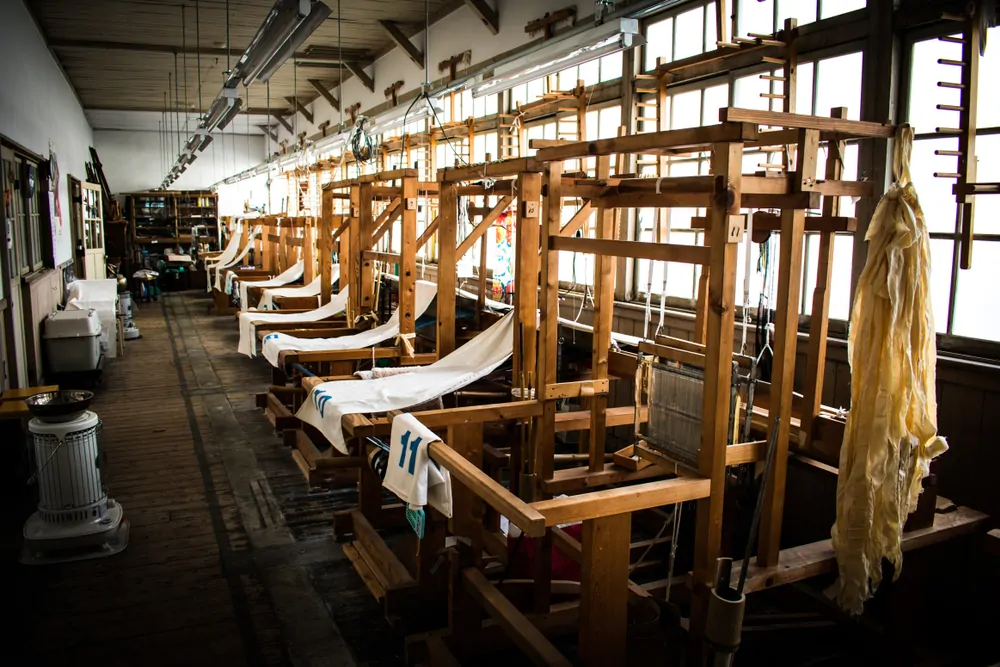
However, the process of making a kimono always involves several steps and a wide range of techniques and materials.
Design
The first step in making a kimono is the design process, in which the kimono maker creates a pattern or design for the kimono. This can include traditional, more modern, unique designs like cherry blossoms.
Fabrication
Once the design is complete, the kimono maker begins cutting and sewing the fabric – the most common method of kimono making is silk fabric, considered the most luxurious and elegant material for kimono.
However, other materials such as cotton, rayon, and synthetic fibers are also used to make kimono.
Dyeing
After the fabric is cut and sewn, the kimono maker begins dyeing the fabric. Using natural dyes, such as indigo and madder, the kimono maker will stain the fabric multiple times to create a range of colors and shades.
Assembly
Once the fabric is dyed, the kimono maker begins assembling the kimono. This includes attaching the lining, the collar, and the sleeves, and then the kimono is pressed and steamed to give it a smooth and polished finish.
Embellishment & Finishing Touches
Finally, the kimono maker will add any final embellishments, such as embroidery or beadwork, to complete the finished product.
Considering the process is a lot more complicated in practice, the art of kimono making is a highly skilled and time-consuming craft that requires a deep understanding of traditional techniques, materials, and design.
The kimono makers who continue to practice this art form honorably keep this traditional craft alive and pass it on to future generations.
Symbolism Behind Kimono
From including vibrant motifs to choosing vibrant color palettes, the best Japanese kimono crafters can express regional or national cultures, attitudes, values, and beliefs through their garments, treating kimono as blank canvases.
This section will discuss how unique motifs, styles, materials, and colors can come together to highlight certain traits about the wearer or crafter.
Motifs
Japanese kimono often feature nature-inspired designs such as cherry blossoms, chrysanthemums, and maple leaves. These designs are beautiful and hold symbolic meaning in Japanese culture.
For example, cherry blossoms represent the fleeting nature of beauty and the transience of life, while chrysanthemums symbolize longevity and rejuvenation. On the other hand, maple leaves are associated with the changing seasons and autumn’s beauty.
Folklore and traditional Japanese symbolism are also commonly found in these garments. These include scenes from traditional Japanese stories and legends, such as the Tale of Genji, one of the world’s oldest novels.
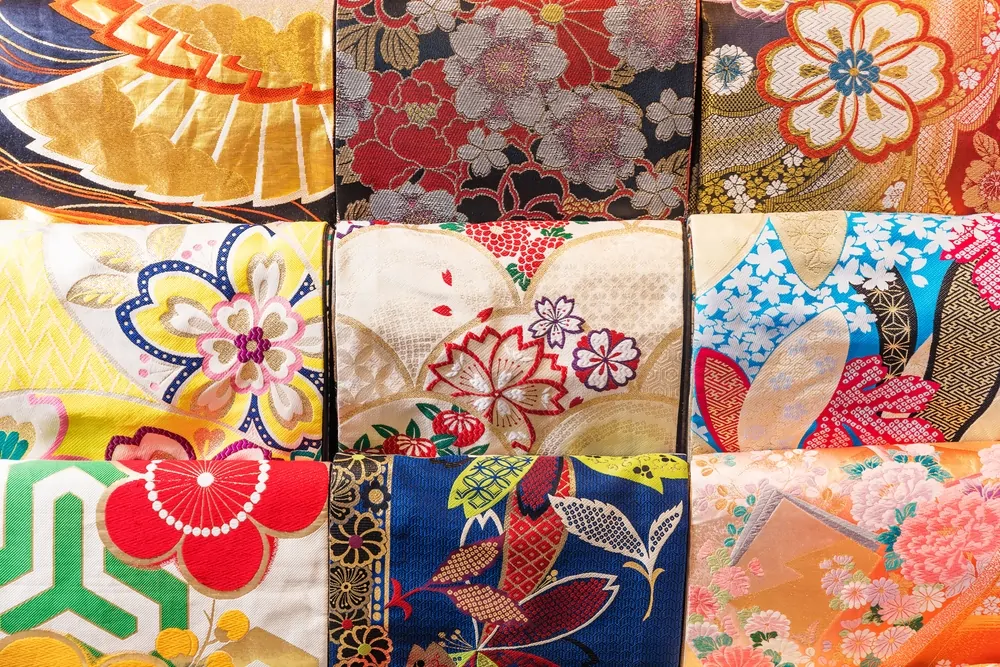
Other popular motifs include cranes and turtles, which symbolize Japanese culture. Cranes are sometimes associated with happiness and eternal youth, while turtles symbolize wisdom and longevity.
Some kimono also feature auspicious symbols, such as pine trees, which are believed to bring good luck and prosperity. Pine trees are also a symbol of longevity and endurance.
Another popular symbol is the “shochikubai” (known as the Three Friends of Winter in English) – a combination of bamboo, pine, and plum blossom; this plant is often viewed as a bearer of fortune and opportunity.
Kimono worn for special occasions, such as weddings and coming-of-age ceremonies, often feature elaborate and symbolic designs.
Bridal kimono typically feature the previously covered cranes and turtles, as well as traditional wedding motifs such as the “shinzen,” which symbolizes the gods and the couple’s wish for blessings in their marriage.
Styles
In Japan, different styles of kimono are considered appropriate for different events or gatherings. Formal occasions such as weddings, coming-of-age ceremonies, and religious events typically call for traditional and formal kimono.
For example, a bride would wear a white kimono called “shiromuku,” a symbol of purity. Conversely, a groom would wear a black kimono called “montsuki haori hakama,” symbolizing his status and family.
For men and women attending a traditional tea ceremony, a simpler and more subdued style of kimono is typically worn, such as a “tsuzure komon” or “shioze komon.” These kimono feature more subtle patterns and colors and are designed to be comfortable and easy to move in.
For less formal occasions, such as a casual get-together with friends or a day out, a more casual style of kimono, such as a “yukata,” is appropriate. These kimono are lightweight cotton and are typically worn in the summer. They are often brightly colored, featuring bold patterns, and are worn with a pair of sandals called “geta.”
A male and female couple attending a formal event may wear a “hakama” and “haori,” which are traditionally formal. Men will wear the hakama with a “montsuki,” and women will wear the hakama with a komon or furisode.
It’s worth noting that today, kimono are less common than before and are worn for formal events and ceremonies. The traditional ways of wearing kimono may vary based on the region you might happen to visit and a matter of personal preference.
Materials
Silk is the traditional material used for high-end kimono, such as those worn for formal occasions like weddings, coming-of-age ceremonies, and tea ceremonies. These silk kimono are often hand-painted or embroidered with intricate designs, making them more valuable and treasured.
Cotton is a more casual and lightweight fabric often used for summer unlined kimono. These are particularly comfortable to wear, are often brightly colored, and feature bold patterns.
Conversely, synthetic fibers such as polyester are often used for machine-made kimono, which are less expensive than traditional silk kimono. Polyester kimono are easy to care for, resistant to wrinkles, and usually machine washable.
When it comes to their significance, the use of silk kimono is often associated with the traditional, formal, and high-end aspects of the kimono culture. Cotton is considered more casual and comfortable and more appropriate for everyday use – the commoner’s kimono, if you will. Synthetic fibers are also used for more practical and budget-friendly options.
It’s worth noting that while silk is the traditional material used for kimono, other materials, such as cotton and synthetic fibers, have become more common today. Some kimono are even made from a blend of silk and synthetic fibers to balance the aspects of tradition, comfort, and affordability.
Colors
Traditional kimono often feature a limited color palette, with each color having its own symbolic meaning:
- White: is regarded as a symbol of purity and is often used for formal occasions such as weddings. As discussed previously, a bride will wear a white kimono called “shiromuku” as a symbol of her pureness.
- Black: is considered a symbol of formality and is often used for formal occasions such as funerals, traditional ceremonies, and formal events. A groom will wear a black kimono called “montsuki haori hakama” as a symbol of his status and family.
- Red: is seen as a bearer of good luck and is often used for auspicious occasions such as weddings and other celebrations. This color is also used to symbolize the color of the sun, fire, and life.
- Blue: represents tranquility and is often used for more subdued occasions such as traditional tea ceremonies.
- Gold: is inherently a symbol of wealth and is often used to decorate kimono for special occasions.
- Yellow: represents nobility and is normally utilized for formal occasions or events.
- Green: is regarded as a symbol of growth and is often used for spring and summer kimono.
- Purple: is a symbol of elegance and is often used for formal and traditional occasions.
Kinds of Kimono
Japanese kimono are a traditional and iconic part of Japanese culture, known for their intricate designs, colors, and fabrics.
These garments are worn on a wide variety of occasions, from formal events like weddings and tea ceremonies to more casual occasions like summer festivals.
Whether you’re looking to purchase your own kimono or are just curious about this rich cultural tradition, this section will provide an in-depth understanding of the different kinds of kimono worn in Japan.
Shiromuku
A shiromuku is a traditional white kimono worn by brides in Japan. In Japanese etymology, the word “shiro” means white, and “moku” means plain, so the name “shiromuku” refers to the kimono’s white and plain appearance. The shiromuku is considered the most formal type of kimono and is worn for traditional Japanese weddings.
The shiromuku is typically made of silk and is worn with a white hakama (a type of wide-legged pants) and a white hood called “tsunokakushi,” which is worn to symbolize the bride’s submission to her husband. The kimono also comes with a long white obi sash worn around the waist and tied in a bow at the back.
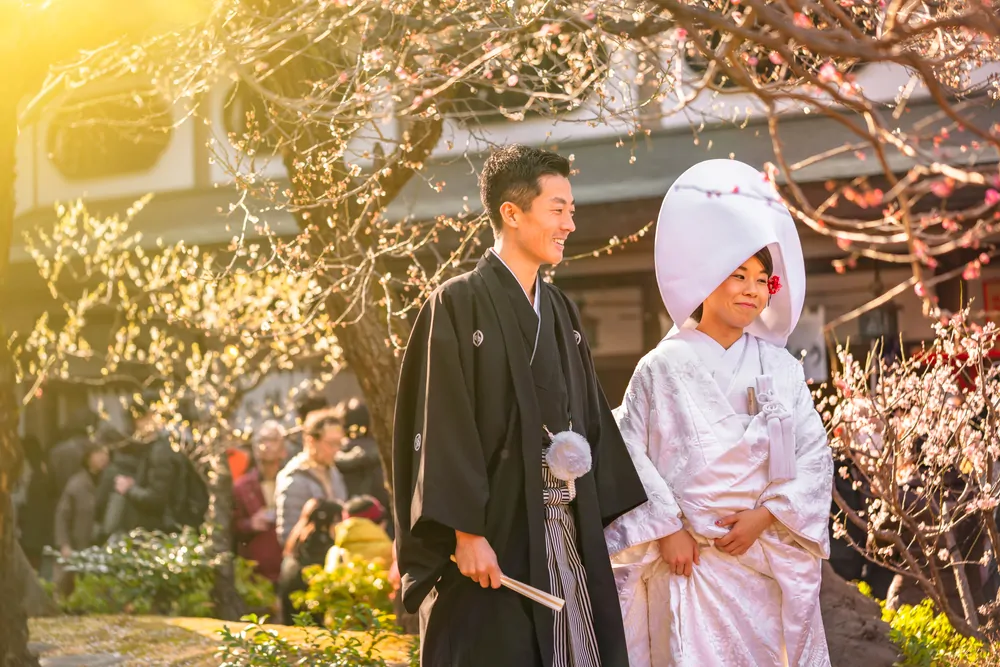
The shiromuku also features other traditional accessories, such as an “uchikake,” a long silk robe worn over the kimono and often decorated with detailed embroidery or gold leaf – which we’ll get into later. The kimono is worn with a special pair of sandals called “tatami,” made of woven straw and worn in traditional ceremonies.
When wearing shiromuku, the bridal hair is often styled in a traditional way, adorned with hair ornaments such as “kanzashi,” which are hairpins decorated with silk flowers or other traditional symbols.
In terms of symbolism, the shiromuku represents the bride’s purity and her transition from her family to her husband’s. The white color symbolizes the bride’s innocence and purity, and the plainness of the kimono represents her willingness to become a part of her husband’s family.
It’s worth mentioning that while the shiromuku is the traditional kimono worn by brides in Japan, today, it’s becoming less common. Many brides choose to wear a more modern western-style wedding dress or a combination of traditional and modern elements.
Western fashions for traditional ceremonies are sometimes perceived as exotic and unique, in the same way, that wearing a traditional Japanese kimono at a western wedding would be an unusual choice. Despite its declining popularity, the shiromuku remains a gorgeous choice steeped in heritage.
Iromuji
An iromuji is a type of traditional kimono that is made of a solid color, usually silk. The word “iro” means “color,” and “muji” means “plain.” As such, the name “iromuji” refers to the kimono’s colored but plain appearance.
Iromuji kimono are considered more formal than casual kimono and are usually worn by women during formal occasions such as weddings, tea ceremonies, and other traditional events.
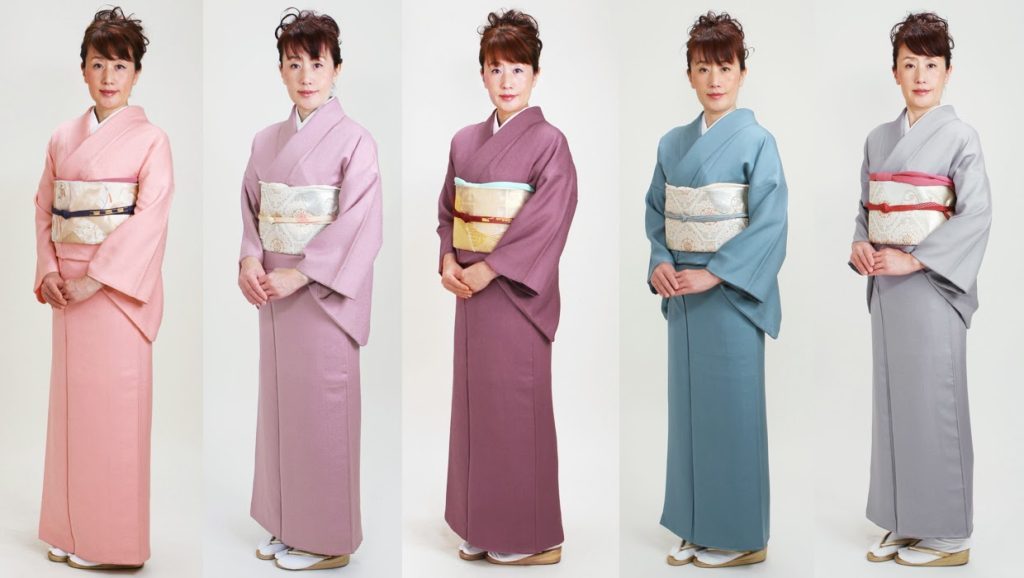
They are usually worn with a formal obi sash, which is tied in a specific way called “taiko musubi,” and it’s considered one of the most formal ways to tie an obi. Iromujis are usually worn with an uchikake, worn only by married women or brides in Japan.
These kimono come in a variety of colors, each carrying its own symbolic meaning:
- Red is seen as a symbol of good luck and is often used for auspicious occasions such as weddings and other celebrations.
- Blue symbolizes tranquility and is often used for more subtle occasions such as traditional tea ceremonies.
- Green is a symbol of growth and is often used for spring and summer kimono.
In most cases, Iromuji kimono represent the wearer’s elegance, status, and formality. They are often worn at important events like weddings and tea ceremonies, where the solid-colored kimono reflects the wearer’s respect for tradition. The obi sash tied in the taiko musubi style shows the wearer’s respect for traditional customs.
Uchikake
An uchikake is a type of traditional kimono worn by women, typically over another kimono, such as an iromuji or a furisode. Compared to Western clothing, uchikakes are to other kimono, like jackets are to shirts.
The word “uchi” means “inside,” and “kake” means “cover,” meaning that the name “uchikake” refers to the kimono’s function as a cover worn over another kimono.
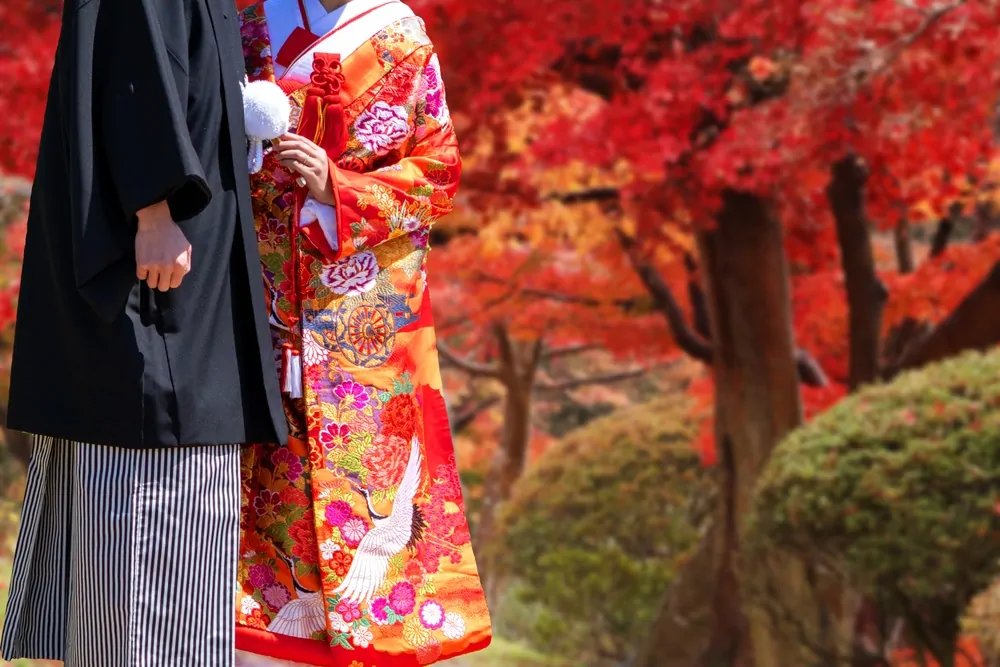
Uchikakes are usually made of silk, are often heavily embroidered with intricate designs, and are decorated with gold or silver leaf. They are often quite long, extending past the wearer’s feet, and are typically worn open, revealing the kimono worn underneath. They are considered formal wear and are traditionally worn by married women or by brides.
Uchikakes come in a variety of colors and patterns and often feature the aforementioned symbols related to good fortune and prosperity, such as cranes, pine trees, and cherry blossoms.
Typically, the uchikake also represents the wearer’s status, and it’s worn to show their marital status and respect for tradition. The embroidery and gold leaf used to decorate the uchikake also tend to reflect the wearer’s wealth and social status.
Yukata
A yukata is a type of traditional Japanese garment that is made of lightweight cotton and is often brightly colored and patterned. The word “yukata” means “bath clothes,” and originally, yukatas were worn after bathing in public bathhouses.
But today, they are worn as summer casual wear and also worn at festivals, fireworks displays, and other outdoor events.
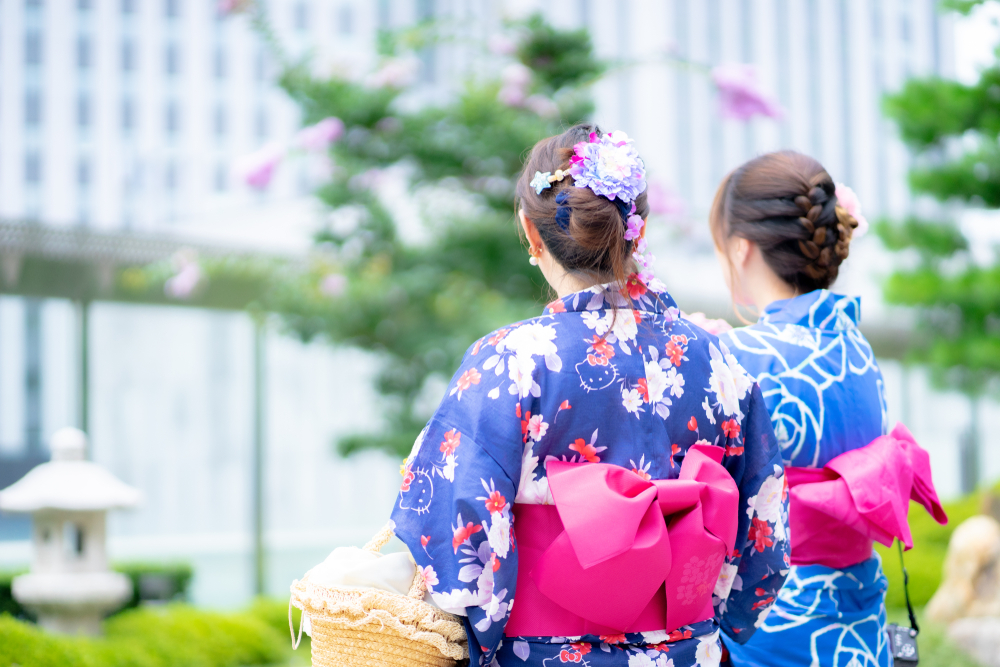
Yukata are typically worn with getas and an obi sash, which is tied in a more casual manner called “kasuri musubi” or “taiko musubi,” depending on the occasion. They are also worn with an “obi-ita,” a thin board that sits between the obi and the kimono to prevent the obi from wrinkling the kimono.
Yukata come in many colors and patterns, usually featuring bold geometric patterns, nature-inspired designs such as flowers, and other traditional Japanese motifs. The colors and patterns used in yukata may have symbolic meaning – e.g., a design featuring waves may represent the ocean or freedom.
The Kimono of Today
Despite their rich culture and history, today’s kimono tend to be more modern and fashion-forward. They are often made with a combination of traditional and contemporary materials, such as silk and synthetic fibers, or even denim.
They may feature bold and unique designs and patterns and are often worn on more casual occasions such as festivals, parties, and other social events.
Moreover, some kimono are exclusively designed to be worn by men. These kimono may feature more masculine designs and patterns and are often worn on formal occasions such as weddings and traditional ceremonies inside and outside Japanese or Asian cultures.
It’s worth noting that while kimono today have evolved, the traditional elements of the kimono culture, such as the obi sash, the geta sandals, and the way the obi is tied, are still present in most of the kimono worn today. Kimono culture is less widespread than it once was and has become more of a niche culture.
Today, the kimono is often worn by people who want to experience the traditional culture and style or those who want to make a fashion statement.
The Impact of Modern Society on Kimono Culture
The kimono industry is being impacted by technology and changes in society every single day, both for better and for worse. Whether you’re a Japanese culture fanatic or looking to acquire one of these garments yourself, it’s worth understanding how this important component of Japanese culture is adapting to these changes.
One way that kimono are being modernized is through the use of technology in their production process. For example, some kimono makers are using digital printing to create intricate designs and patterns. Others are using advanced textile technology to create new, lightweight fabrics that are easier to wear and maintain.
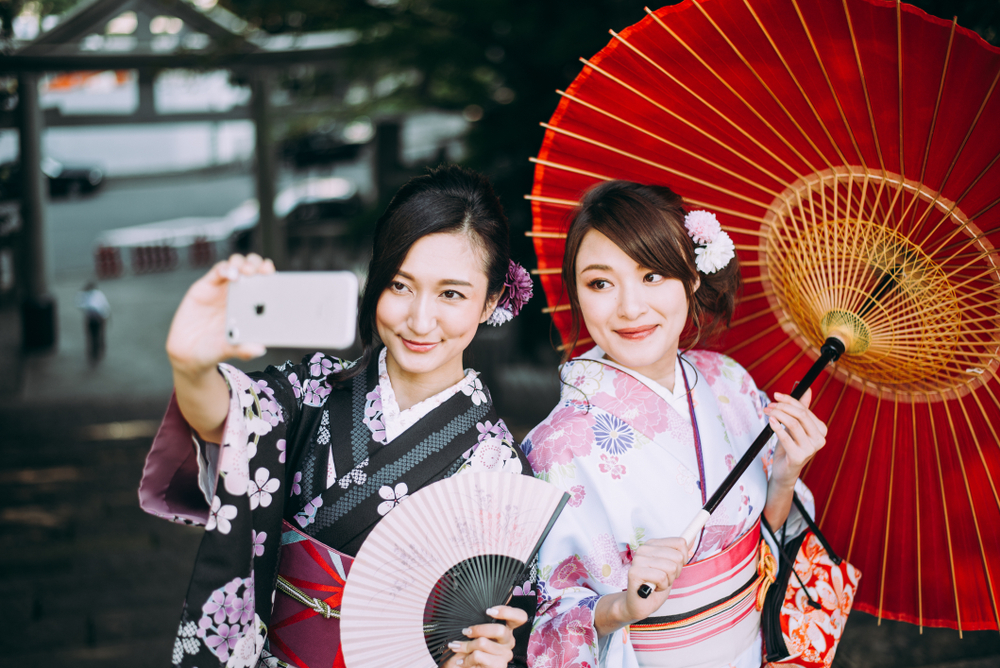
Another way that kimono are being adapted to contemporary society is through the use of rental services. Many kimono rental shops have opened in which customers have the opportunity to experience traditional kimono without committing to a purchase – which, depending on the kind, rarity, style, material, etcetera, can be quite expensive.
This allows more people to experience the traditional kimono culture without having to spend heavily on a garment that they may only wear once or twice.
Moreover, some brands take vintage kimono and repurpose them into modern, wearable designs. This approach keeps the kimono tradition alive and allows for new and exciting interpretations of this iconic garment.
This movement is regarded as a way to preserve kimonos’ rich history and craftsmanship while making them more accessible to a broader audience. We’ll cover some of these brands below!
Contemporary Kimono Brands
When we think about kimono, we typically think of traditional garments known for their intricate craftsmanship and design.
However, as trends change, luxurious silk kimono, often expensive and reserved for special occasions, are being replaced with more affordable and modern options like kimono dresses and jackets that are easy to wear and style.
Despite this, the future of authentic vintage kimono is a concern, as certainly no one wants to let this rich tradition disappear.
While many vintage kimono end up in second-hand stores or rental shops, some brands work to revive them by breathing new life into them.
Let’s go over a curated selection of six brands that have to be on your radar in case you’re considering acquiring a brand-new kimono – or one that has been repurposed to be another clothing item – to impress your friends and close ones.
- Wafu is a Japanese brand that takes vintage kimono and repurposes them into modern, wearable pieces such as jackets, dresses, and skirts. They also offer a rental service for those who want to experience traditional kimono in a more contemporary way.
- Kimono Flea Market Ichiroya is a brand that specializes in vintage kimono, obis, and other Japanese garments. They offer various authentic kimono at affordable prices and a tailoring service to make vintage kimono fit modern sizes.
- KIMONO by KIMONO is a brand that creates contemporary kimono-inspired clothing and accessories. They use modern fabrics and designs to create kimono-inspired jackets, dresses, and scarves that can be easily incorporated into any wardrobe.
- KIMONO ZAKURA is a brand that produces high-quality, hand-made kimono. They offer a wide variety of kimono, from traditional styles to more contemporary designs. They also offer a made-to-measure service for those who want a truly unique kimono.
- KIMONO TRADITION is a brand that produces kimono using traditional techniques but with a modern twist. They offer a wide variety of kimono, from formal styles to more casual designs. They also offer a rental service for those who want to experience traditional kimono without committing to a purchase.
- KIMONO MADE is a brand that creates contemporary kimono using Japanese fabrics and techniques. They offer a wide variety of kimono, from formal styles to more casual designs, and they also offer a tailoring service for those who want a personalized kimono.
Closing Thoughts
Kimono are a traditional and iconic part of Japanese culture, known for their intricate designs, colors, and fabrics. They have been worn for centuries and have evolved over time to adapt to the changing fashion trends and cultural practices.
From the formal and traditional shiromuku worn by brides to the more casual and everyday yukatas, kimono have a wide range of styles and purposes.
While the kimono of today may differ in design, materials, and style, they still maintain traditional elements such as the obi sash, the geta sandals, and the way the obi is tied, which reflect the culture and tradition of the kimono.
Kimono are not just garments – they reflect Japan’s rich cultural heritage and offer an elegant and timeless way to experience traditional Japanese fashion. Learning more about the history and artistry behind this legendary garment is highly recommended for anyone planning to buy a kimono or visit Japan.
Whether you’re planning to invest in a kimono of your own or just curious about this rich cultural tradition, understanding the different types of kimono and their significance is a fascinating journey into the heart of Japanese culture.

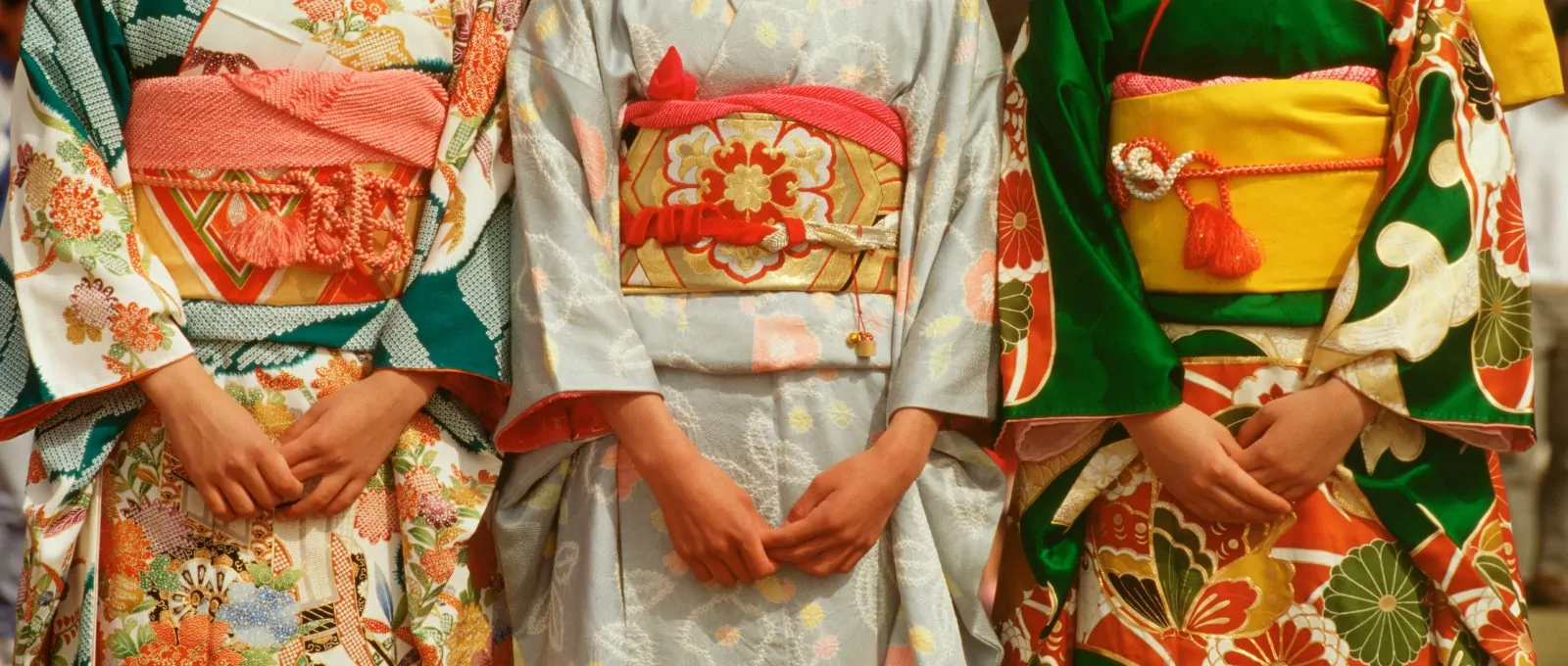
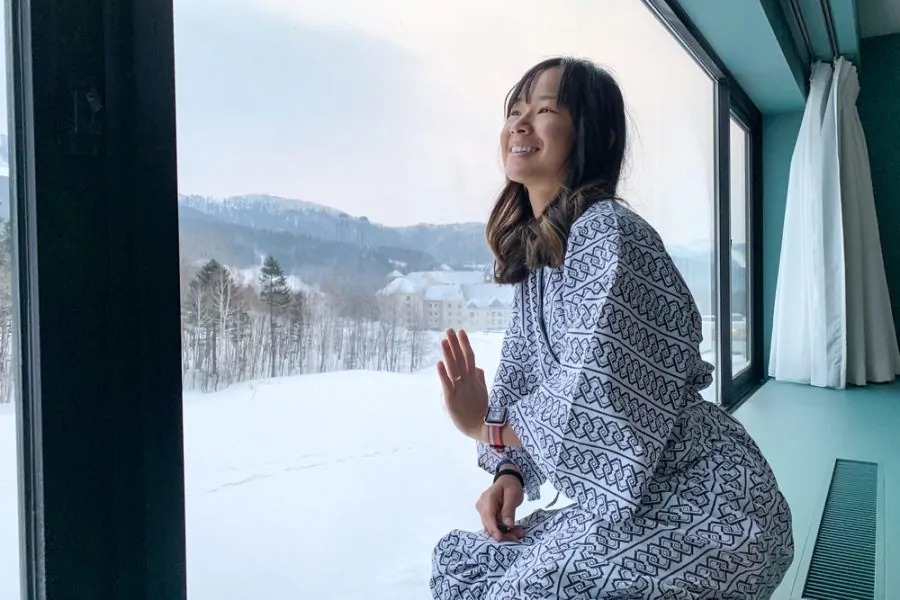
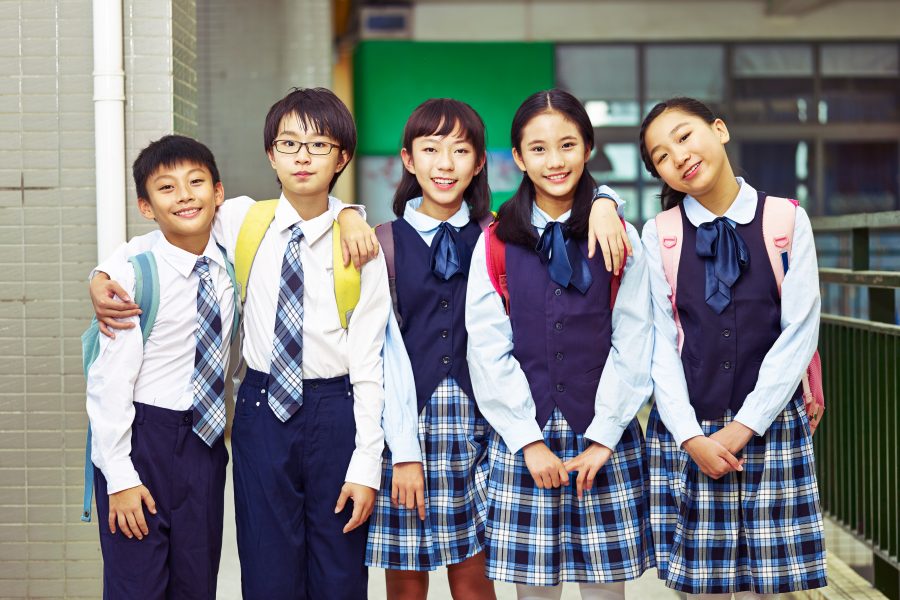
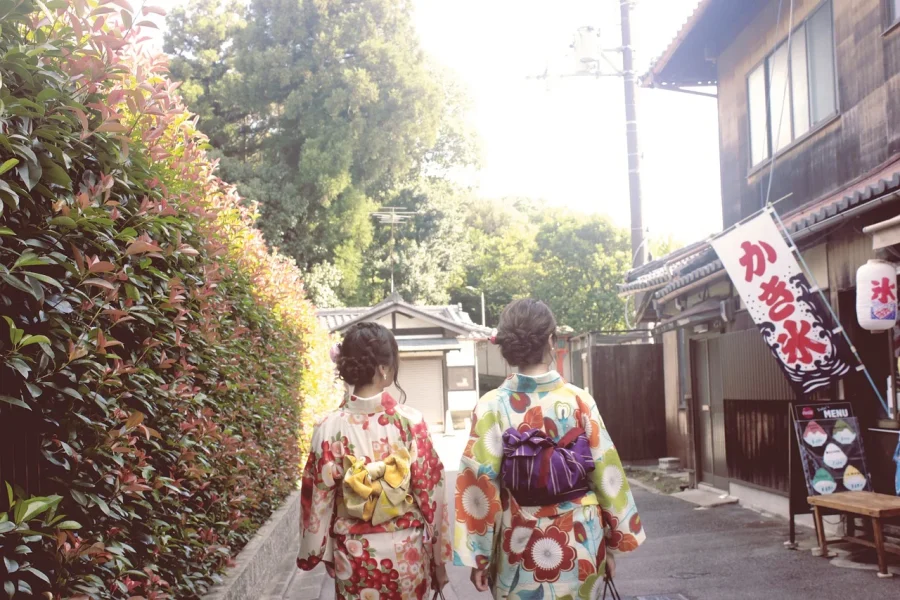
Leave a Comment